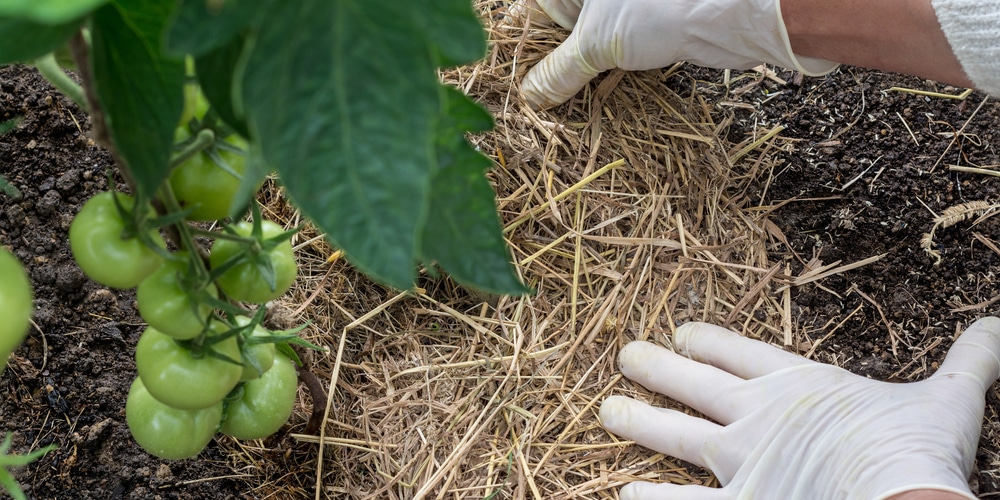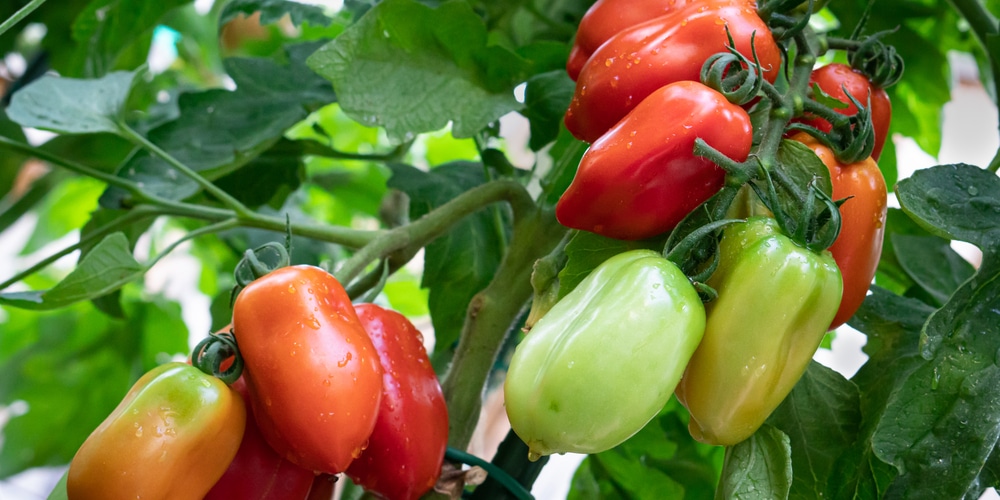You may (or may not) have noticed plants growing out of hay bales. Such a practice is inexpensive and suitable for people without a garden. Planting vegetables in bales is possible because as the straw breaks down, it fertilizes the plants by turning them into rich matter that provides plants with all they need for growth.
This method of growing plants isn’t new. Indeed, people used it several centuries ago. However, it is now gaining more attention.
But can you grow tomatoes in hay bales? And how do you do it? But, more importantly, what would you gain?
If you want to find answers to such questions, look no further. We have gathered all you need to know about planting tomatoes in hay baled in this essential guide.
What Are The Advantages of Using Hay Bales?
You can successfully grow tomatoes in straw bales. Such structures act as raised beds: they keep your plants warmer during the cold weather and provide them with a constant supply of nutrients. Indeed, as the hay bales break down, they feed your plants.
So, hay bales are ideal for growing tomatoes (and other plants), especially if you don’t live in a warm region. Also, they are an excellent substitute if your substrate is poor or not healthy.
Additionally, if you don’t have a garden, you can have satisfying results by placing the straw bales on your porch or paved yard.
Hay bales are different from containers because they offer a sterile medium that, with time, transforms into rich, organic matter. Also, such material is inexpensive and easy to move around, meaning you’ll be able to organize your garden as you wish.
How To Prepare Hay Bales For Growing Plants?
Growing plants in hay bales require some planning. To begin with, you’ll have to pick a suitable location, find high-quality straw bales, and make sure you can add water and fertilizer to provide your plants with moisture and nutrients, which are essential for growth.
If you know people with horses, you may have no issues finding straw. Alternatively, you can look for it at your local gardening store (or even online).
You’ll need to plant your tomatoes under the full sun. Don’t forget that these vegetables love the heat and require at least six hours of direct sunlight every day. If you don’t have a garden (but even if you do), consider building a wood frame around the bale.
It will look much better and increase the aesthetic appeal of your property! Put the bales in a sunny location and get ready to prepare them before adding your tomatoes.
Water the bales regularly to keep them moist, especially at the beginning of the process. Also, use a liquid fertilizer or prepare a mixture of bone and fish meal and compost.
Doing so will also increase the speed of decomposition, which will ensure a healthier environment for your tomatoes. Wait for at least two weeks before planting your tomatoes in the straw. But how can you do that?
Jump to the following sections to find out!
Planting Tomatoes in Straw Bales
Get your seedlings (whether you have started them indoors or bought them at your local garden center) and make sure your bale is decomposing. You can tell this by placing a hand inside the bale: if it feels hot, it should be ready! Avoid planting your tomatoes too early: it might damage or even kill them!
Don’t forget to secure the straw bales near a fence or a wall to support your plants and prevent them from falling over. Also, consider using supports such as cages or stakes.
To plant your seedlings, take some stray and decomposed material from the bale to make a hole. It should be large enough to fit the plant’s root system. Put the tomato plant inside and fill it with soil.
You’ll get better results if you use a potting mix amended with compost. Also, add a layer of straw over the ground: it will act as mulch, maintain a stable temperature, and increase water retention.
Of course, you can also plant seeds directly on the straw bales. However, keep in mind that doing so will give you results much later and will require additional attention from your side.
Related Article: Straw Cover For Grass Seed


